
(L.) Miller, The Gardeners Dictionary: eighth edition Opuntia n. 2, 1768
Herbarium; Herbarium; Herbarium; Herbarium; Herbarium; Herbarium; Herbarium; Herbarium; Herbarium; Herbarium; Painting; Painting; Painting; Painting
Original Citation
What is Opuntia ficus-indica?
Opuntia ficus-indica is a prickly pear species derived from several wild ancestors. It is generally a spineless prickly pear, but some cultivars have spines.
Details
O. ficus-indica is a large plant (tall and woody). It is actually a collection of Opuntia cultivars rather than a discrete species. The various cultivars probably have differing admixtures of genes from O. streptacantha, O. tomentosa, O. hypiacantha, O. megacantha, and O. leucotricha.
It is not native to the United States but is included here because it has naturalized in essentially frost-free regions of the country. It was developed in Mexico where the young cladodes (nopales) are consumed as a vegetable and the sweet fruits (tunas) are enjoyed. This Opuntia may have been used as human food for up to 9,000 years. Spineless opuntias were chosen over the millennia while the crop was developed.
Many forms are octoploid, but multiple ploides have been reported which likely refer to its complicated heritage.
Other Notes
O. ficus-indica is one of the most widespread opuntias in the world, found on all continents except Antarctica. It has become naturalized in many warms areas. O. ficus-indica grows well in mesic soils but tolerates some drought. It withstands high humidity and rain. It reproduces easily by clonal means and this facilitates its spread to the point where it is a serious weed in some areas, disrupting pastures and croplands. Britton and Rose described the plant as having a woody trunk and growing up to 3 m tall.
Some clones of O. ficus-indica can hybridize with other Opuntia species in controlled settings, including O. lindheimeri, though it is not clear if the progeny of wide crosses are fertile or if such hybridization is frequent in Nature.
One special use of O. ficus-indica is as a host for the cochineal insect (Dactylopius spp.). These scale insects grow on the surface of the plants. The female insects produce a red exudate (carminic acid) that may be a defensive chemical. The exudate is collected and used to make a red dye which is used in the production of cloth, cosmetics, and food coloring, etc.
This Opuntia was popularized as a source of animal or human food in the United States around the beginning of the 20th Century. But, its successful adoption was not achieved over a wide area in part because it is cold sensitive. It is still employed as animal food in some situations.
Article: The Origins of an Important Cactus Crop

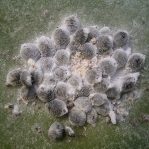

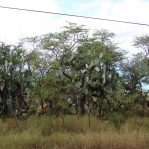
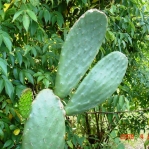
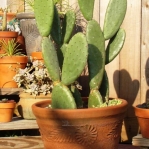
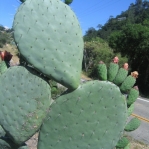
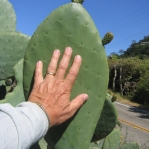

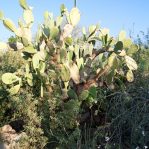
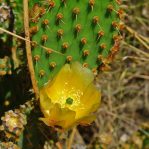

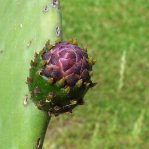
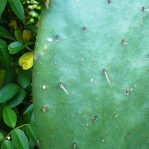
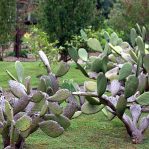
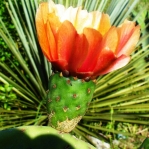
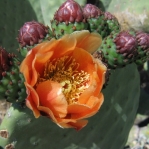
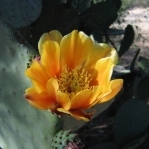
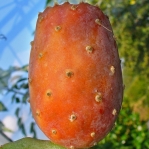
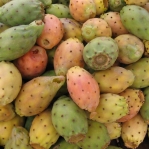
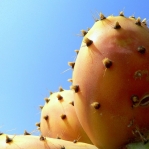
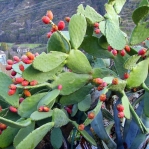
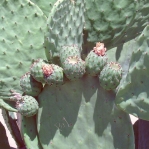
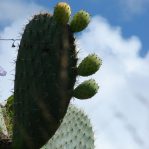
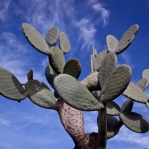
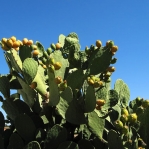
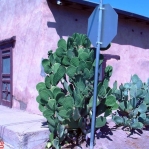
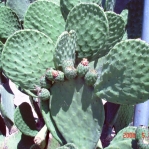
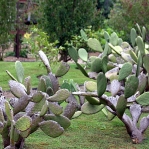
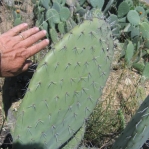
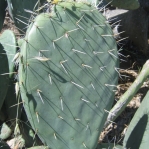
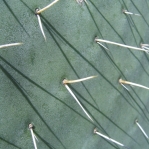
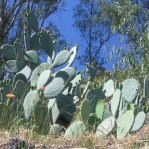
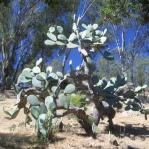
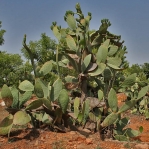

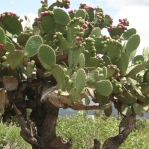
Hi
Have had Opuntia Indica for 2 years and still has not flowered – it is in a large pot, in direct sunlight and behind glass, any ideas why
Regards
Terry
Hi Terry,
I can’t say why it won’t flower. Any chance you know what type of Opuntia it is? If it is a large type (e.g., O. ficus-indica), it won’t flower till it is large (several feet tall). And then it might want lots of root space, more than a pot will provide.
Or, perhaps it wants to be outside in the sun, not behind glass.
Just thinking.
Joe Shaw
Opuntia tomentosa and Opuntia robusta aren’t on the website in the species list!